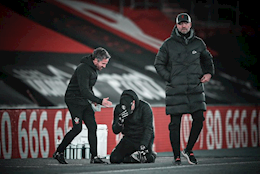
Plastic helmets
The main plastic football helmet came in 1940. It was developed and protected by John T. Riddell and his child John T. Riddell Jr., of the John T. Riddell Company in Chicago, and an outdoor supplies supplier. The single-formed shell was more grounded, lighter, longer-enduring, and didn’t decay how calfskin does when sodden. Tones could likewise be heated into the plastic so the paint occupations would longer-endure. In 1940 Riddell additionally fostered the principal jaw lash to lay on the jawline rather than the neck and the main plastic facial covering. bongda

There were issues in any case. Due to this Riddell was in a tough situation as was the plastic helmet. Riddell’s plastic helmet was somewhat level on top from the start yet it changed to its tear-drop shape, which permitted a disaster for slide aside or the other as opposed to being dealt with. Its web suspension could be raised or brought down to fit the top of a player.
In 1955, G.E. Morgan, an expert to Riddell, and Paul Brown, the mentor of the Cleveland Browns, imagined the BT-5 facial covering which is the single bar plan. The year after the arrival of the BT-5, a solitary wave radio was concocted by John Campbell and George Sarles, who moved toward then-Cleveland Browns proprietor Paul Brown to introduce a radio inside quarterback George Ratterman’s helmet.
In 1971, Morgan, presently administrator of the leading body of Riddell got a patent for “Energy Absorbing and Sizing Means for Helmets.” They had valves on their crown to permit air to be siphoned into vinyl pads that were packed into each space inside the helmet. The player put it on and afterward had it siphoned up to fit solidly around the player’s head. At times liquid was likewise utilized. A liquid catalyst dissolvable was utilized by a portion of the Green Bay Packers players to beat the chilly climate of Lambeau Field in late-season games.
Sources are uncertain concerning who initially planned air bladders for football helmets yet Dr. Richard Schneider of the University of Michigan Hospital is accounted for to have accepted that air was the best method for safeguarding against obtuse power. Considering this hypothesis, he designed an inflatable bladder for use inside a football helmet. The Michigan Wolverines Football crew utilized a model and Schutt Sports employed Schneider and began efficiently manufacturing the AirTm Helmet in the mid-1970s.
Numerous veteran players favored the old web suspended Riddell TK-2 since it was, by and large, lighter and more breathable. Inside helmet cushions were then fostered that were lighter and didn’t should be loaded up with air or liquid by both the Schutt and Riddell sports organizations.
In late 1976, due to worry for wellbeing, four-point jaw lashes were expected in school ball. These kept the helmet immovably set up.
Space-age inflexible polycarbonate composite plastic helmets and vinyl-covered steel compound facial coverings became guidelines during the 1980s and 1990s.
In 2002, Riddell delivered another more round plan for the helmet called the Revolution (or Revo) and it is right now the most generally involved helmet in the National Football League The Schutt partner is known as the DNA Pro Adult Helmet. A review delivered by the University of Pittsburgh Medical Center shows that the Riddell Revolution, and others like it, diminish the frequencies of blackout by 31%. In approximately May 2013, Mary K. Engle, the FTC’s partner chief for publicizing rehearses composed that the organization had closed the UPMC study “didn’t demonstrate that Revolution varsity football helmets lessen blackouts or the gamble of blackouts by 35%”. Riddell has since ceased utilization of the 31% case. Afterward, Riddell delivered the Revolution Speed helmet.

